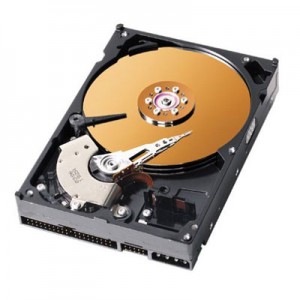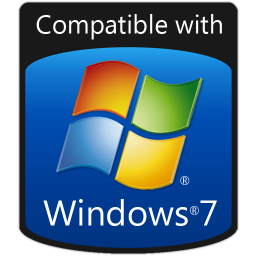Network Attached Storage – What is it and who needs it?

As your business grows, so will the need for better and more efficient data storage and this is where a network attached storage can come in handy. The network attached storage devices are nothing more than a specialized device, which stores data and files, makes the data available to all other computer in the network, offers data protection, and enables you to assign different access permissions as well. On the outside, most of these devices look just like a normal PC or server, but unlike regular computers, most do not have keyboards, monitors, or mice attached to them. Typically, they also run a strip-down operating system, which allows them to do what they have been designed for efficiently, but not to be used as a fully functional server of computer.
How to pick the best network attached storage for your small business:
Data storage capacity
 This is one of the first characteristics, which you should look into. Many NAS devices, available on the market today, come with storage of 1TB or more, but before making your pick, you should keep your future data needs I mind. While 1TB might be more than sufficient today, only six months or a year down the road, this could prove insufficient, so you should get as much storage as your budget allows. On the other hand, if you do not expect your needs to change any time soon, purchasing one of the more affordable products that offer a few GBs storage might make perfect sense. When comparing the different models, keep in mind many of the NAS devices are actually sold without the hard drives, so you will not only have to purchase them separately, but set aside time to install them as well.
This is one of the first characteristics, which you should look into. Many NAS devices, available on the market today, come with storage of 1TB or more, but before making your pick, you should keep your future data needs I mind. While 1TB might be more than sufficient today, only six months or a year down the road, this could prove insufficient, so you should get as much storage as your budget allows. On the other hand, if you do not expect your needs to change any time soon, purchasing one of the more affordable products that offer a few GBs storage might make perfect sense. When comparing the different models, keep in mind many of the NAS devices are actually sold without the hard drives, so you will not only have to purchase them separately, but set aside time to install them as well.
Overall Performance
While having a device that stores terabytes of data is great, its performance is of importance as well. There are various NAS Charts, which are used to compare their performance and almost all of them take into account file write, file read, RAID 1 file write and read, RAID 5 file write and read, RAID 10 file write and read, and backup to USB drive in FAT/EXT3/NTFS formats speed. Backup to eSATA drive in FAT/EXT3/NTFS formats, network backup speed, and other benchmarks are used as well and all of them indicate how well does the device perform. Again, you do not have to buy top of the range product if you are on a tight budget or you are not likely to access and use the NAS too often, but higher performance will definitely result in higher productivity and shorter waiting times when you write, read, or backup your data.
Operating System Compatibility
 If your network consists of computers, running Windows only, then you are far less likely to have any compatibility issues. However, if some or all of your network units run Mac Os X or any of the Linux flavors, then you need to make sure that they can communicate with the network attached storage that you intend to purchase.
If your network consists of computers, running Windows only, then you are far less likely to have any compatibility issues. However, if some or all of your network units run Mac Os X or any of the Linux flavors, then you need to make sure that they can communicate with the network attached storage that you intend to purchase.
Data Protection
Most NAS devices that have more than one storage unit come with RAID (Redundant Array of Independent Disks) protection, which protection could range from RAID 1 level to RAID 5 level, where each one of these levels offers different degree of data protection. RAID 1, which is most commonly used with sets of two disks, could be actually implemented over larger sets as well and it mirrors the data by writing it without stripping or parity, and offers fault tolerance from disk failure. In comparison, RAID 5 works slightly differently as it distributes the data as blocks to all available hard drives and can work flawlessly even after one of these drives fails.
Access permissions
 As your organization grows, you are likely to have different groups of users, to whom you would want to assign different access levels. Many NAS devices come with built-in functionality that allows you to do this off the bat and set up access permissions on individual and group level easily. However, some of the low-priced units could have very limited data access configurations, similar to the ones that you can find on a personal computer; on these devices, you could make some files or folders readable only, but even though this could be fine for a small family-ran business, it is not an adequate solution for bigger businesses.
As your organization grows, you are likely to have different groups of users, to whom you would want to assign different access levels. Many NAS devices come with built-in functionality that allows you to do this off the bat and set up access permissions on individual and group level easily. However, some of the low-priced units could have very limited data access configurations, similar to the ones that you can find on a personal computer; on these devices, you could make some files or folders readable only, but even though this could be fine for a small family-ran business, it is not an adequate solution for bigger businesses.
Network Connectivity
Most network attached storage devices come with 1000 MB Ethernet connectivity and quite a few of them have more than one port, which could come in handy as the network grows. Ideally, you should test the unit with the application that you intend to run, as you would want to avoid longer waiting times when the read and write requests and the traffic on your network increase. While choosing a unit with more than one failover-protected 1000MB LAN port is a wise move, if accessing data from outside the office is important, then buying a NAS with hosted remote access service is highly recommended. As an alternative, the ones that offer remote access via FTP or HTTP protocols could be considered, but these protocols do not offer the same data transfer security as the hosted remote services.
Scalability
 Although most NAS devices can handle millions of files easily, they all have their limits. If you expect your business, network, and data needs to increase dramatically in the near future, you would want a NAS device that can handle these additional requirements easily. Even though purchasing additionally network attached storage units is always an option, this comes with its own sets of complications and it could greatly increase the management overhead.
Although most NAS devices can handle millions of files easily, they all have their limits. If you expect your business, network, and data needs to increase dramatically in the near future, you would want a NAS device that can handle these additional requirements easily. Even though purchasing additionally network attached storage units is always an option, this comes with its own sets of complications and it could greatly increase the management overhead.
Functionality
The management interface, ease of setting up, ease of configuration, network medium, the ability to work with different size hard drives, failure alerts, and USB ports are only a handful of functionality and features that need to be considered. The support and service that the manufacturer provides should be evaluated too since in case of failure, swift repair or replacement could be crucial.
What are your thoughts on network attached storage solutions? Do you prefer a cloud based service like Dropbox or something more traditional? Please share with us in the comments.

